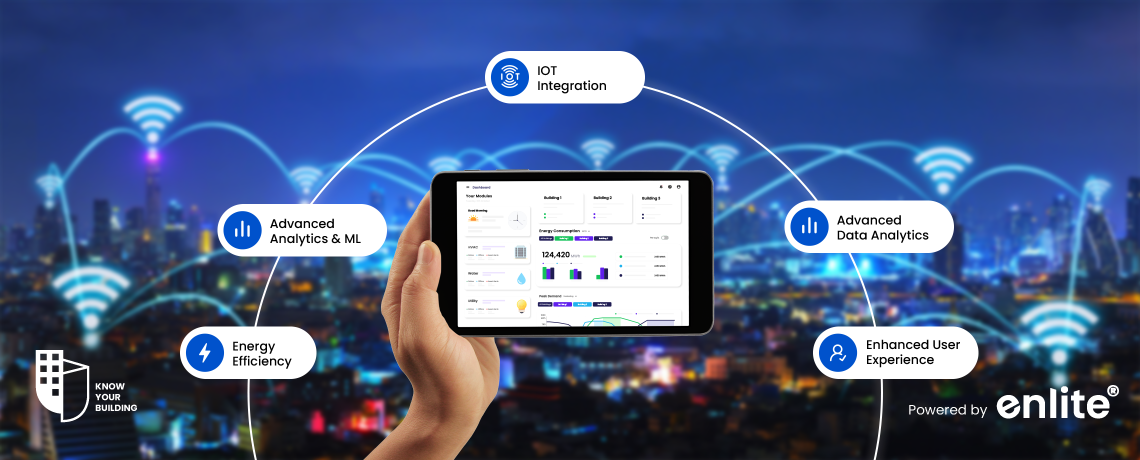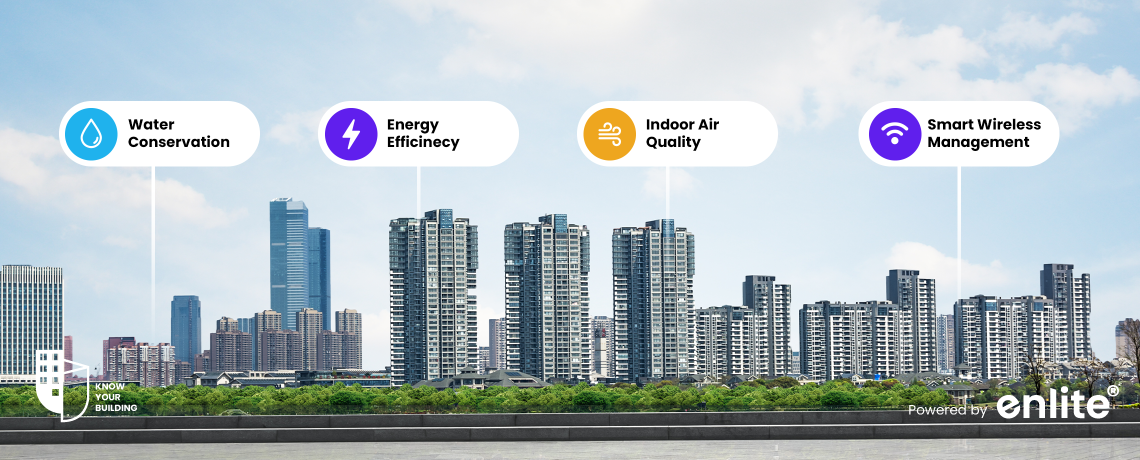Introduction
One of the key elements that significantly contributes to an industry’s effective operation is its infrastructure. No matter the industry, whether it is manufacturing, packing, or assembly, smooth and efficient operations assist in achieving planned targets. As a result, the company or commercial real estate gains a reputation. Building management systems can now serve as the foundation for such positive development in order to continuously monitor and manage facilities in an efficient manner. Thereby, the commercial real estate that don’t have building management systems will face various challenges while managing and monitoring the buildings and facilities. In this blog, we will learn what are the major difficulties faced by commercial real estate that don’t have a building management system.
What is Commercial Real Estate?
Commercial real estate (CRE) is the land that is only used for business-related activities or to offer a workspace, as opposed to being used as a residence, which would fall under the category of residential real estate. Most frequently, renters leased commercial real estate to conduct businesses that generate cash. This vast category of real estate can range from a small shopping mall to a single storefront. There are several types of commercial real estate. It could be anything, such as an office complex, a duplex, a restaurant, or even a warehouse. Commercial real estate can provide income for people, businesses, and corporate interests by renting it out or by keeping it and reselling it.
What is a Building Management System?
A building management system (BMS) is a computer-based building monitoring system that is installed in apartments or facilities in order to supervise and manage hardware, including HVAC, illumination, power grids, security equipment, IoT sensors, and energy and gas meters. An Internet-capable network, software, a server with a database, and intelligent sensors comprise a basic BMS. Intelligent sensors are positioned all over the building to collect data, which is then transmitted to the building management system (BMS) and stored in a database. The BMS will raise the alarm if a sensor delivers data that deviates from the specified settings, thereby allowing supervisors to take necessary actions.
Major Challenges Faced By Commercial Real Estate That Don’t Have A Building Management System
Nowadays, one of the major responsibilities of the building management systems is to ensure that the 40% of the energy used by commercial real estate and buildings is maintained to a minimum. Consequently, buildings typically use 10% to 30% more energy when a BMS is not properly installed or is not present at all.
Accordingly, building management systems in facilities are quickly gaining traction globally in an effort to cut carbon emissions and energy consumption. For instance, all tertiary buildings in the EU will need to have Building Automation Control Systems (BACS) by 2025, thereby consuming energy and reducing carbon emissions. Building sector professionals, such as property owners and facility managers, are looking for BMS that can be quickly implemented and modified to comply with these rules.
Building automation systems are now at the center of connectivity in a commercial real estate market that is rapidly adopting IoT and will continue to be significantly influenced by IoT, particularly in the context of data-driven decision-making abilities.
Below given are some of the major challenges and inabilities faced by commercial real estate or buildings that don’t have building management systems installed on their premises.
Lack of data driven decision making capabilities
A commercial real estate with an absence of building management technology not only misses being productive but also can’t make data-driven decisions. With a properly implemented building management system, a greater amount of data will be obtained from all of the venues in a variety of conditions using appropriate sensors. This information will be gathered, processed, and used to study areas that want improvement. Improvements can range from something as simple as reporting a leaking pipe to being aware that necessary action is being performed to keeping an eye on the overall environment. Once the technology is engaged, building automation will alter the way we interact with our surroundings every day. Our daily lives are impacted by how our buildings feel and function, whether it’s lowering cooling expenses or choosing the optimal environment for work.
Furthermore, if you only have a building management system without data analytics, you’re left with an overwhelming amount of data that may really cause more problems than good. That data may be efficiently arranged, mined, prioritized, and applied with the aid of a smart analytics system created to support building management system automation. Building management systems’ analytics capabilities provide useful, approachable insights and spot chances for team and equipment operating efficiency. This type of secure edge-to-cloud service makes it simpler for contractors and end users to benefit from robust data analytics without requiring them to become experienced computer programmers or spend additional money to establish their own programming teams.
Lack of Safety and Security
Safety and security are two more crucial features that a building or commercial real estate lacks when there are no building management systems installed. A BMS system permits the monitoring of several sensors installed in the building, such as smoke, gas leak, and door-intrusion sensors. An efficient BMS system may record events and send notifications to all concerned parties via emails, SMS, smart apps, central monitoring kiosks, and kiosks. Furthermore, with a BMS system, convenience can be increased by offering a remote door unlocking capability, which often complements the use of video door phones. There are other systems that interact with the BMS for many buildings, including crucial perimeter security systems (such as laser-based ones), access control systems for vital building regions, and even elevators.
Inability to remotely monitor the facility/surroundings
Remote monitoring of the wellness functionality and workability of various hardware and electrical equipment is compromised when a commercial real estate doesn’t have a proper building management system installed at its premises. A building automation system enables total control of all facility lighting for podiums, parking, facade lighting, and landscaping. In addition, it enables water pump control and tank status monitoring. An efficient BMS may keep an eye on a number of different subsystems, including generators, STP plants, elevators, and others, that must be constantly watched over at the building level. The property management team will keep an eye on these requests and immediately inform the specialized maintenance team of any issues for quick resolution and regular status updates.
Absence of Energy Conservation features
One of the major challenges or problems faced by commercial real estate without a building management system is the inability to conserve energy. According to the findings, the majority of BMSs may lose between 15% and 50% of the energy they may be saving. Also, energy efficiency gains of about 15-20% should be produced by a BMS that is functioning properly. One of the important functions made possible by the BMS system is energy consumption monitoring, particularly for devices that consume energy without employing submetering. A building management system (BMS) offers automatic control of energy efficiency and occupant comfort via a single digital interface. BMS monitors and manages electrical and mechanical services, such as lighting and HVAC, which lowers unneeded electricity expenses. It might also include services for security, access control, elevators, and safety systems.
Lack of Networking
With ongoing technical advancements, research, and development, it is now feasible to seamlessly employ the Internet of Things in a building or facility. This implies that a secured network can be linked to industrial components such as machinery, display panels, data centers, access points, or even gates. In order to make network connectivity viable, this network can be managed by a central hub, sometimes called a building management system. Without such sophisticated networked systems like BMS, businesses have had to deal with unfavorable conditions like inefficiency and losses. The main causes of such inadequacies were found to be human error, poor raw material, and output machine analyses, or downtime brought on by power outages.
Absence of Quality Control
The best indication that quality control is lacking is the mere fact that a structure is messy and disorganized. Examples of these include damaged equipment, inadequate water treatment, erratic power supply, frequent power outages, faulty lighting systems, and defective plumbing systems. There was also no consistent fitness testing, dedicated staff, or regular inspection system in place to ensure the quality of the work. BMS prioritizes quality by allotting a separate workflow for quality control and a robust process. For instance, BMS demands multiple layers of inspections, such as weekly cross-inspections in addition to daily inspections by onsite staff.
Lack of Comfort and Productivity
Two crucial things that occupants of commercial real estate or building facilities lack due to the absence of building management systems are comfort and productivity. The ability to control every aspect of your building’s overall performance, including the lighting and HVAC systems, provides you with the opportunity to create a comfortable working environment for the occupants. According to reports, at least 60 percent of employees are dissatisfied with the warmth and illumination in their workplaces, which has a detrimental effect on overall productivity and comfort. An energy management system, as previously said, will assist in regulating temperature levels based on the surrounding environment and lower the facility’s carbon footprint by applying energy-saving practices. As environmental awareness spreads across the globe, modernizing or upgrading the building’s energy management is a more contemporary method of boosting occupant contentment.
Lack of Technological Advancements
Facilities or commercial real estate without a building management system heavily lack the incorporation of high-end technologies, including the Internet of Things. The most recent development in building management for commercial real estate buildings is IoT-based analytics tools. An IoT-based platform provides facilities managers with an unprecedented level of insight into their building systems, enabling them to proactively control operations as well as the overall building environment. The IoT is more than just a control system because it actually complements conventional building management systems. Facilities managers can implement load-shedding schedules to actively and deliberately minimize energy demand (and consequently utility bills) by knowing where, when, and how their building is consuming energy.
Absence of Predictive Capabilities
Predictive capabilities are one of the major losses when a building or commercial real estate does not have an efficient building management system on its premises. A BMS may reduce maximum demand expenses, which represent a major portion of many firms’ energy spending. An efficient BMS can foresee large building loads and enable necessary modifications to prevent them from reaching maximum demand threshold levels. A web-enabled BMS can forecast favorable or extreme weather conditions and modify HVAC sequences for the best result. For instance, if the BMS predicts a hotter-than-normal day, it can pre-cool the building automatically to use off-peak energy.














